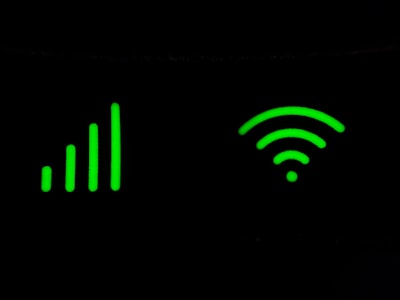What suggestions do you have for choosing the best place to put my wireless router?
This question was answered on January 18, 2024.

Photo by Praveen kumar Mathivanan on Unsplash
Depending on the size of your home or how far outside your home you want the signal to be usable - for items like security cameras - placement is critical.
Choosing a somewhat central location is where I would start assuming that a power outlet is available.
If you live in a two-story house, placing it on the second floor will improve the overall coverage. If you live in a single-story home, elevating the router on a shelf or as high as possible can also help.
A big mistake is trying to hide the router inside of a cabinet or tuck it behind something so it can’t be seen. This can cause both coverage and heat issues, which will shorten the life of the device.
Obstructions to Wi-Fi signals can range from thick walls, other wireless electronics, appliances, heavy furniture, aquariums, or even large mirrors.
As placement isn’t an exact science, testing various locations is an effective way to find the best location in your home.
Windows
If you are trying to use the Wi-Fi signal outside, placing the router near a window can be helpful. If not, avoid windows so the signal is more concentrated inside your home.
Having a router near a window can also allow direct sunlight to overheat the device or if the frame is metal, cause unwanted reflections of the radio signal.
Metal Objects
Items made of metal, especially if they are large or thick can be barriers to allowing Wi-Fi signals to pass or cause reflections.
A classic mistake is placing the router on top of a metal filing cabinet in an office which can induce signal complications and potential heat issues.
Adjusting the Antennas
Buying a router that has external antennas provides some additional options to try with the position of each one.
Experiment with a combination of vertical and horizontal positions to see if coverage in problematic areas improves.
Update Router Firmware
As with other devices, performance and security updates are available for routers, so make sure you have the latest firmware. If you don’t know how to do this on your specific device, do a Google search for ‘updating firmware on XXXXX’ that includes the brand and model number.
2.4 GHz vs 5 GHz
Your router transmits signals at two different frequencies, which can impact how well your connected devices perform.
The lower 2.4 GHz frequency is better for longer-range connections as long as you aren’t trying to transfer huge data files between devices or stream high-definition video on a large screen.
For the most part, the lower frequency speed cap is still faster than the actual Internet connection in most homes and is just fine for basic web surfing.
If you’re having consistent performance issues while trying to connect at 5 GHz, try switching to the 2.4 GHz signal.
If you’re connecting closer to the router, the benefits of the 5 GHz band include faster transmission speeds and less interference from other electronics.
If your home is large, consider upgrading to a range extender or a mesh network: https://bit.ly/3U1Vwf3.
About the author
 Ken Colburn of Data Doctors on January 18, 2024
Ken Colburn of Data Doctors on January 18, 2024
Need Help with this Issue?
We help people with technology! It's what we do.
Contact or Schedule an Appointment with a location for help!

